Geoblog.pl  akleeberg
akleeberg  Podróże
Podróże  New Zealand, Australia and SE Asia 2010
New Zealand, Australia and SE Asia 2010  Z jeziora Rotorua nad wodospad Huka/ From Rotorua Lake to Huka Falls
Z jeziora Rotorua nad wodospad Huka/ From Rotorua Lake to Huka Falls
 akleeberg
akleeberg  Podróże
Podróże  New Zealand, Australia and SE Asia 2010
New Zealand, Australia and SE Asia 2010  Z jeziora Rotorua nad wodospad Huka/ From Rotorua Lake to Huka Falls
Z jeziora Rotorua nad wodospad Huka/ From Rotorua Lake to Huka Falls 
2010
04
sty
Z jeziora Rotorua nad wodospad Huka/ From Rotorua Lake to Huka Falls
Ranek przywital nas pochmurna pogoda i deszczem. Andrzej podja odwazna decyzje i poszedl sie wykapac w jeziorze. Po sniadaniu w namiocie leniwie zaczelismy sie pakowac i skladac namiot w lekkim deszczu. Dzisiaj w planach mamy zwiedzanie Te Puia - centrum sztuki maoryskiej i miejsce gdzie sa gejzery i gorace blota. Najtanszy bilet wstepu kosztowal $40, byla opcja za $50 z przedstawieniem. My zdecydowalismy sie na najtansza opcje. Przewodnik oprowadzil nas po glownych atrakcjach (gejzer Pohutu, gorace blota, ptaki kiwi, rekonstrukcja budynkow Maoryskich i dzialajece szkoly rzezbiarstwa tradycyjnego i tkactwa). Pelna nazwa w jezyku Maoryskim to: Te Whakarewarewatangaoteopetauaawahiao (w skrucie Te Whaka). Wycieczka z przewodnikiem trwala ok 1.5h (w jej trakcie wypogodzilo sie i znowu wyszlo slonce). Przewodnik byl bardzo fajny i ciekawie opowiadal. Wycieczka nie obeszla calego parku wiec postanowilismy go obejsc sami. I nie bylismy zawiedzeni. Teren jest calkiem spory i jest co chodzic. Jest pelno zakamarkow z malymi gejzerami, gorocymi blotami, dziur i otworkow z ktorych ulatnia sie para, no i oczywiscie siarkowy zapach (czytaj smrud - jak dojezdzalismy do parku to myslalem ze to Pauliny nogi bo juz dwa dni nie myte, ale okazalo sie ze to juz bylo czuc te gorace zrodla z daleka). W sumie bylismy tam az to wczesnego popoludnia.
Z Te Puia ruszylismy na poludnie w kierunku jeziora Taupo (najwiekszego jeziora w Nowej Zelandii - ma 616 km2 powierzchnii 193 km lini brzegowej). Po drodze zachaczylismy o wodospad Huka na rzece Waikato - najdluzszej rzece w Nowej Zelandii. Wodospad nie jest wysoki, ale robi duze wrazenie (tuz przed wodospadem rzeka zwerze sie z ok 100 do ok15 metrowego kanionu). Woda za wodospadem ma przepiekny, selewynowy kolor. Spodobalo nam sie tu tak bardzo ze postanowilismy poszukac tu miejsca na noc. Kawalek w gore rzeki bylo dosyc spore pole kempingowe (za darmo) na ktorym bylo juz sporo kampervanow i namiotow, ale udalo nam sie znalezc wolne miejsce. Na miejscu pelna kulturka bez glosnej muzyki, imprez i rozwydrzonych dzieciakow. Pole jest monitorowane przez patrole z jakiejs firmy ochroniarskiej. Nocka byla bardzo spokojna. Rano jak przygotowywalismy sobie sniadanie podeszla nasza sasiadka z autobusu przerobionego na kampervan i zaoferowala nam wrzatek na herbate i dwie nektarynki. Pokrzepieni takim poczestunkiem ruszylismy w dalsza droge.
Morning welcomed use with clouds and rain. Andrzej made brave decision and went for a morning bath in the lake. After breakfast inside the tent we started slowly packing stuff back to car. It was still drizzling. We had in plans to visit Te Puia – Maori art and craft centre with hot spring, geysers and hot mud pools. Cheapest entry was $40. There was also option for $50 with some Maori performance but we went for the cheaper option. Guide took us for a tour around major park attractions (Pohutu geyser, hot mud pools, kiwi bird inhabitant, reconstruction of Maori village and schools of carving and waving. Full name of the place in Maori language is: Te Whakarewarewatangaoteopetauaawahiao (Te Whaka in shorter version). The tour took about an hour and a half (during which it stopped raining and sun came out). Guide was very informative and engaging. The tour didn’t include whole park so we decided to see all of it afterwards and we were not disappointed. Whole place is quite large so there is plenty things to see. There is lots of hidden place which we discovered walking around with small hot springs, geyser s, hot mud and holes form which steam is coming out and of course sulphur smell (well to be honest it more stinks - when we were looking for this place there was this smell in the air, first I thought it’s Paulina’s feet as she didn’t have a shower for two days but it turned out that it was the smell of the hot springs;) We spend there whole morning and left in mid afternoon.
From Te Puia we drove south, towards Taupo Lake (the largest lake in NZ – it’s surface has 616 km2 and 193 km around) On the way we stopped to see Huka Falls on river Waikato – the longest river in NZ. The falls itself are not tall, but it is really impressive (just before the falls river narrows from about 100 m to 15 m canyon – so there is lots of water coming through). Water has beautiful blue colour. We like the place so much that we decided to camp by the river. We drove a little bit up the river and found free camping ground. There was quite a few campervans and tent there already but we managed to find a spot. Place was very nice and peaceful (no parties and mad-running-everywhere kids ) and it was monitored but security patrols. We had a good night sleep. In the morning when we were preparing breakfast one of our neighbours came and offered hot water for a tea and some fruits. In the good spirits we departed towards Wellington.
Z Te Puia ruszylismy na poludnie w kierunku jeziora Taupo (najwiekszego jeziora w Nowej Zelandii - ma 616 km2 powierzchnii 193 km lini brzegowej). Po drodze zachaczylismy o wodospad Huka na rzece Waikato - najdluzszej rzece w Nowej Zelandii. Wodospad nie jest wysoki, ale robi duze wrazenie (tuz przed wodospadem rzeka zwerze sie z ok 100 do ok15 metrowego kanionu). Woda za wodospadem ma przepiekny, selewynowy kolor. Spodobalo nam sie tu tak bardzo ze postanowilismy poszukac tu miejsca na noc. Kawalek w gore rzeki bylo dosyc spore pole kempingowe (za darmo) na ktorym bylo juz sporo kampervanow i namiotow, ale udalo nam sie znalezc wolne miejsce. Na miejscu pelna kulturka bez glosnej muzyki, imprez i rozwydrzonych dzieciakow. Pole jest monitorowane przez patrole z jakiejs firmy ochroniarskiej. Nocka byla bardzo spokojna. Rano jak przygotowywalismy sobie sniadanie podeszla nasza sasiadka z autobusu przerobionego na kampervan i zaoferowala nam wrzatek na herbate i dwie nektarynki. Pokrzepieni takim poczestunkiem ruszylismy w dalsza droge.
Morning welcomed use with clouds and rain. Andrzej made brave decision and went for a morning bath in the lake. After breakfast inside the tent we started slowly packing stuff back to car. It was still drizzling. We had in plans to visit Te Puia – Maori art and craft centre with hot spring, geysers and hot mud pools. Cheapest entry was $40. There was also option for $50 with some Maori performance but we went for the cheaper option. Guide took us for a tour around major park attractions (Pohutu geyser, hot mud pools, kiwi bird inhabitant, reconstruction of Maori village and schools of carving and waving. Full name of the place in Maori language is: Te Whakarewarewatangaoteopetauaawahiao (Te Whaka in shorter version). The tour took about an hour and a half (during which it stopped raining and sun came out). Guide was very informative and engaging. The tour didn’t include whole park so we decided to see all of it afterwards and we were not disappointed. Whole place is quite large so there is plenty things to see. There is lots of hidden place which we discovered walking around with small hot springs, geyser s, hot mud and holes form which steam is coming out and of course sulphur smell (well to be honest it more stinks - when we were looking for this place there was this smell in the air, first I thought it’s Paulina’s feet as she didn’t have a shower for two days but it turned out that it was the smell of the hot springs;) We spend there whole morning and left in mid afternoon.
From Te Puia we drove south, towards Taupo Lake (the largest lake in NZ – it’s surface has 616 km2 and 193 km around) On the way we stopped to see Huka Falls on river Waikato – the longest river in NZ. The falls itself are not tall, but it is really impressive (just before the falls river narrows from about 100 m to 15 m canyon – so there is lots of water coming through). Water has beautiful blue colour. We like the place so much that we decided to camp by the river. We drove a little bit up the river and found free camping ground. There was quite a few campervans and tent there already but we managed to find a spot. Place was very nice and peaceful (no parties and mad-running-everywhere kids ) and it was monitored but security patrols. We had a good night sleep. In the morning when we were preparing breakfast one of our neighbours came and offered hot water for a tea and some fruits. In the good spirits we departed towards Wellington.
Komentarze (4)


 olbin - 2010-01-06 19:37
olbin - 2010-01-06 19:37Szalejecie w Australii, a nie wiecie co Was tutaj omija - -16 stopni i śnieg po pachy... Zazdroszczę! Powodzenia! (:
 Bogo - 2010-01-06 23:30
Bogo - 2010-01-06 23:30No bez przesady...w Poznaniu ok -5'C i sporo śniegu. Nic ciekawego Was nie omija. Podnieśli opłatę paliwową i akzyce na fajki :)
 siostra - 2010-01-07 13:38
siostra - 2010-01-07 13:38Rzeka na zdjęciach bardzo przypomina mi te alpejskie rwące potoki, które nieraz trzeba było przejść. Tylko zieleń dookoła uświadamia, że to nie nasz wspólny wyjazd na Monterosę. Super zdjęcia Andrzeju. Paula kadruj Andrzeja bardziej w całości jak sie da. Wiem, że jest go dużo i nie zawsze sie zmieści w kadrze, ale bez łapek wygląda jakoś niekompletnie. Jesteście fantastyczni.
 Andzia - 2010-01-09 20:20
Andzia - 2010-01-09 20:20ana cave - to brzmi fantastycznie! Nareszcie wiem, gdzie się schronić przed tą moją bandą... Czołem Bąki! Jak narazie spisujecie się świetnie z pisactwem, ciekawe na jak długo starczy pary w łapkach! Oby do końca!!! Czego serdecznie sobie i licznym, niewątpliwie, kibicom życzę. Zdjęcia bombowe - skąd ściągnąłeś? :-PPPP Nnnieeeee no są naprawdę super. jestem oczarowana. Serio, serio. Ściskamy chłodniutko, bo u Was upały :-D i do poczytania!






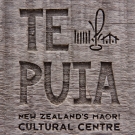
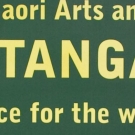
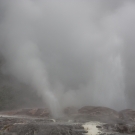
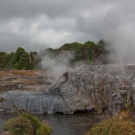


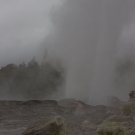
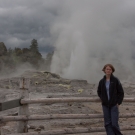
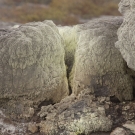
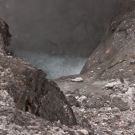
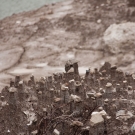
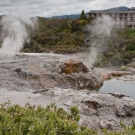
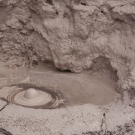
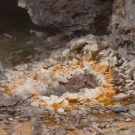


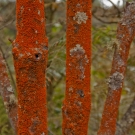
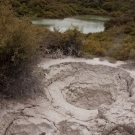
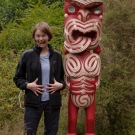
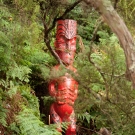
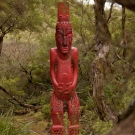
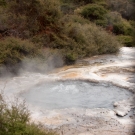
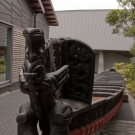



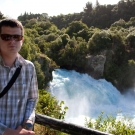
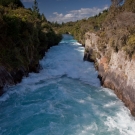

 Zasoby:
Zasoby: 




